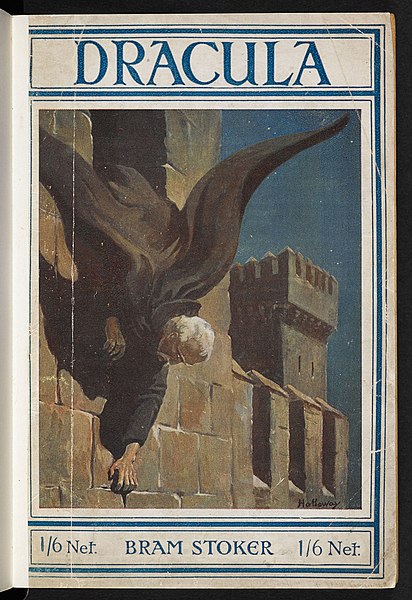
Bram Stoker: The Man Behind The Dracula Myth
Halloween season is approaching again, and what novel is more suited to the eerie fears and spine-chilling shocks of this time of year than Dracula? Written by Bram Stoker in 1897, Dracula is the most famous of all vampire stories, described by one early reviewer in Punch magazine as ‘that very weirdest of weird tales’. Although by the 1890s the vampire had become a familiar fictional character, Stoker concocted an astonishing blend of Gothic tradition, primitive superstition and (for its time) cutting-edge technology, to tell a tale unlike anything that had ever been written before.
A Story That Never Dies
Not all early reviews of Dracula were positive: the Manchester Guardian’s reviewer, for instance, said that it was ‘an artistic mistake to fill a whole volume with horrors’. Nevertheless, Dracula’s extraordinary power was recognised by Stoker’s contemporaries, and the sheer force of the narrative – and above all of Stoker’s mysterious creation Dracula himself – are undoubtedly still felt in modern times. The petrifying yet strangely alluring figure of Dracula, cloaked and fanged, lurking in his Transylvanian lair or stalking the streets of Victorian London, has achieved iconic status. This is largely due to Dracula’s many portrayals on stage, television and in film, with the latter including remarkable performances by Bela Lugosi (Dracula, 1931), Christopher Lee (Dracula, 1958) and Gary Oldman (Bram Stoker’s Dracula, 1992).
It seems then, as if Dracula will always be with us, as each new generation recreates his myth to suit the changing times. But how much do you know about Dracula’s creator? Here are some facts which may surprise you:
Friends And Influencers
Bram Stoker (1847-1912) was born and brought up in Dublin. While working for the Irish Civil Service, he wrote fiction, and became theatre critic for the Dublin Evening Mail, co-owned by Sheridan Le Fanu, who later became Stoker’s friend. Le Fanu was a popular ghost and horror story writer, who in 1872 wrote the tale of Carmilla, a female vampire who preys on the young female narrator, Laura. Carmilla was well-known to Stoker, and a key inspiration for Dracula.
In 1878 Stoker married. His wife, Florence Balcombe, had previously been courted by Oscar Wilde, whom Stoker had known as a student at Trinity College, Dublin, and with whom he remained friends.
Stoker then got the job of theatre manager at the Lyceum Theatre, London, and was personal assistant to Henry Irving, owner of the Lyceum and an extremely well-known actor. Irving became Stoker’s idol; his son was named after him. Irving’s imperious tone and flamboyant gestures inspired the character of Dracula.
Stoker had adapted Dracula for the stage shortly before the novel was published, and it was performed at the Lyceum. Stoker urged Irving to play Dracula on stage, in fact, though he was unsuccessful. Through his friendship with Irving, Stoker mixed in high society and travelled widely. He numbered among his friends the celebrated creator of Sherlock Holmes, Arthur Conan Doyle, who called Dracula ‘the very best story of diablerie which I have read for many years’. Stoker was also a close friend of the novelist, poet, playwright and critic Hall Caine, to whom Dracula is dedicated.
Other Novels By Bram Stoker
Among Bram Stoker’s many other works are the horror novels Jewel of the Seven Stars (1903), Lady of the Shroud (1909), and Lair of the White Worm (1911). But none of these novels exerted the powerful grip on the popular imagination that Dracula had in the late nineteenth century, and still has today.